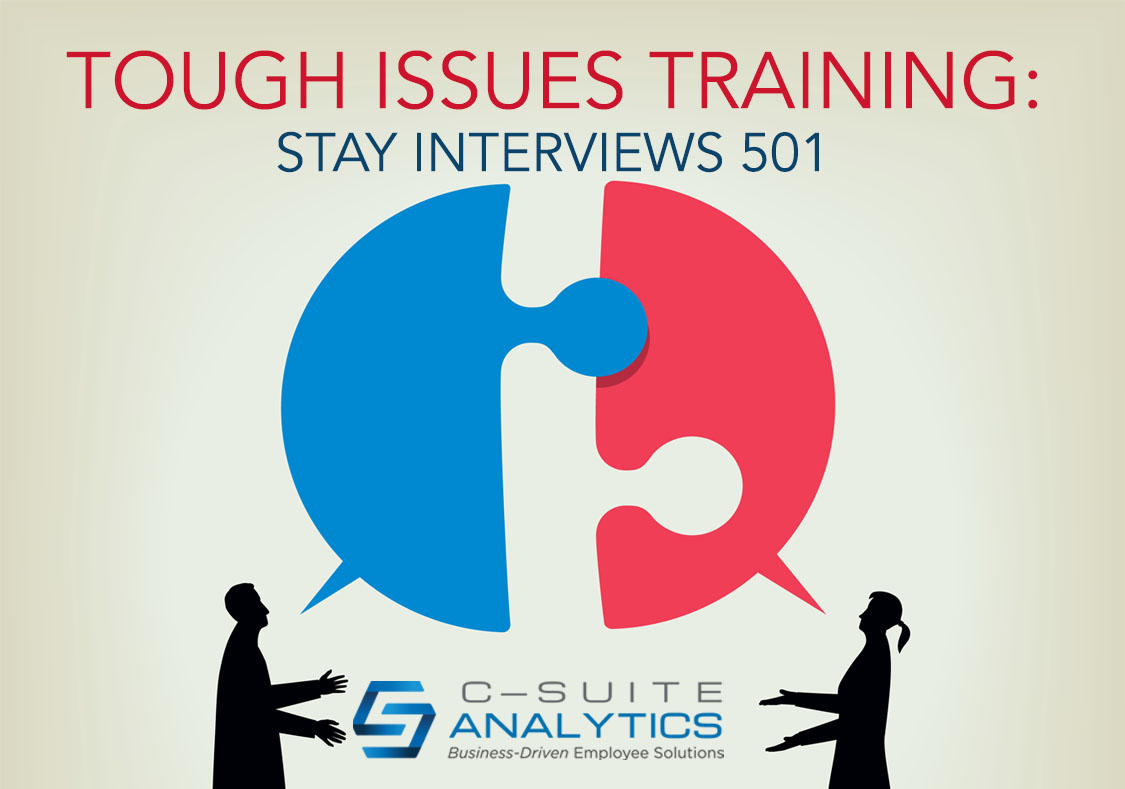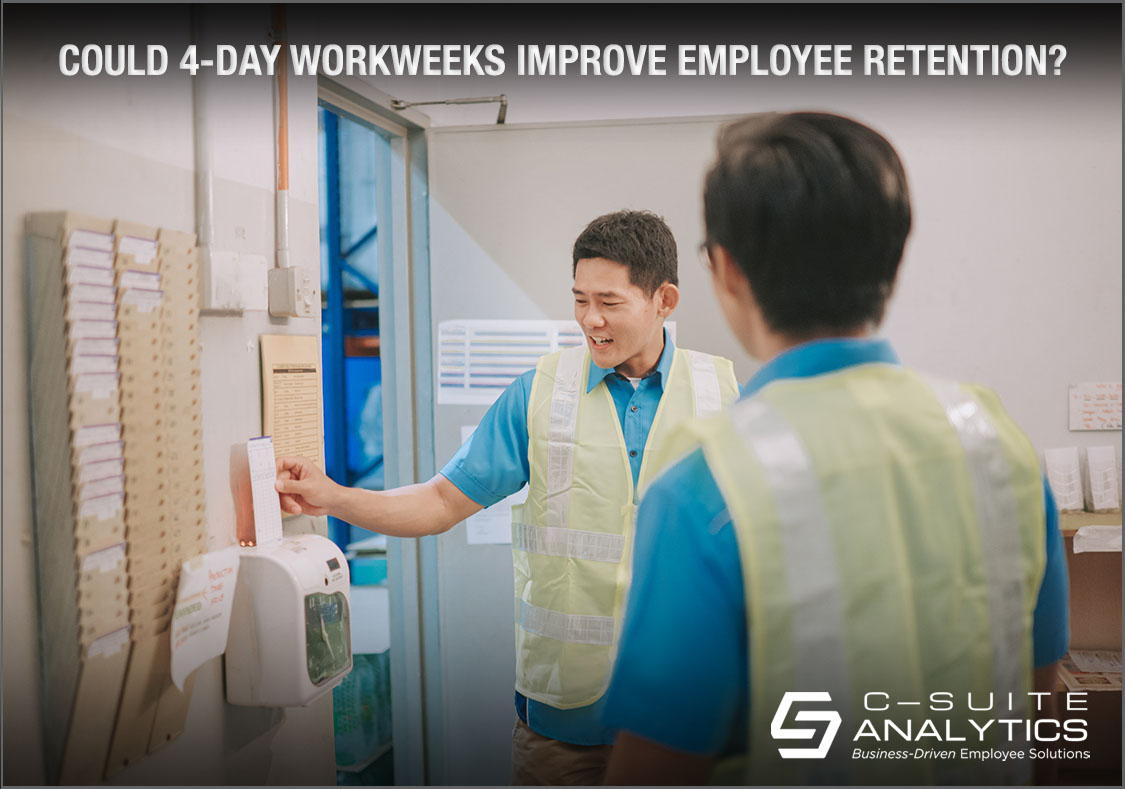Data shows a four-day workweek is popular with employees. On the company side, data suggests work satisfaction and productivity are up, recruiting is easier…and employee turnover is down. And during these days workforce shortages, every company is seeking a recruiting edge. Could this be “it”?
Tough Issues Training:

I wrote “The Power of Stay Interviews” in 2012…seven years ago…and never anticipated then that Stay Interviews would become as commonly-used by organizations as onboarding, engagement surveys, exit interviews, and all of those other now-standard people-management processes. Throughout these seven years my team and I have contracted with organizations to put Stay Interviews in place, and surrounded them with business-driven processes that include (1) converting turnover to dollars to gain executive attention, (2) establishing retention goals for all turnover and for new-hire turnover, (3) training supervisors to forecast how long each employee will stay, and (4) coaching executives to hold leaders accountable for achieving their goals and developing accurate forecasts. And along the way we invented recruiting and hiring tools to screen out short-termers and screen in employees who will stay.
Picture in your mind our four-hour Power of Stay Interviews training class, where supervisors practice listening, probing, taking notes, and other required skills. This training now includes a “tough issues” section that goes like this.
First, supervisors always fear the hardest questions like “I need a 20% raise or I’m history,” the type of issue that rarely if ever occurs, yet supervisors fear them. Instead we have learned the most frequent requests are about “work processes”, issues like why must I prepare reports no one reads, or this equipment is outdated…or this person or this department hold me back.
But employees might surface an issue that is real to them, and one we cannot find an immediate fix for. Let’s use this one for example:
We need more staff.
From the employee’s perspective, everyone knows we are overworked/stay here late/too much overtime/take stress home to our families…so getting more staff is a slam dunk. From a supervisor’s perspective though, gaining a new, non-budgeted position just isn’t happening. We train our client supervisors to do this:
1. Acknowledge the issue to preserve the employee’s dignity and say, “Tell me more”.
2. Conversely, resist the emotional urge to say, “That ain’t happenin’. What’s next on your list?”
3. Explore the issue from the employee’s total perspective by probing, taking notes, then asking follow-up probes, and ensuring you learn all you can, that you’ve squeezed all of the water out of the sponge.
4. If no solution appears, conclude the discussion by saying, “I’ve taken three pages of notes and would really like to think this through and perhaps discuss it with others. Can we visit again next Tuesday at 2 PM?”
The key skill for supervisors to learn is contained in #3 above, gaining the employee’s total perspective. And sometimes this requires finding the right probes that unlock the employee’s thinking to where even she learns something new by answering those probes. For example, I would ask these questions in response to We need more staff:
- What specific work can you not get done?
- Which work gives you the most stress?
- Is everyone pitching in or are some employees not performing?
- Is there another department that can share some of this work?
- Will this work volume increase? Or decrease? Or stay the same?
- Do we need to continue doing all of these things or can we eliminate some, at least in the short-term?
- What happens if something doesn’t get done?
- Are our processes right? Or do we waste time doing unnecessary steps?
- Can we get better equipment?
This is not an easy skill to build, even though reading the above question list might make it look easy. We ask supervisors to conduct our “Question Mark” exercise where every statement they make must be a question, rather than rush to a too-simplistic answer which doesn’t really solve their problem. Most importantly, asking the questions above might open doors to solve the “need more staff” issue by reducing the stress of work, either on the spot or after a few days of consideration. And the discussion starts with identifying the real problem…stress of work…rather than following the employee’s path to an assumed solution of “more staff” which is unlikely to happen.
Employees who work without Stay Interviews toil through their frustrations each day with no hope that improvements can actually occur. It’s what they talk about…and complain about…over dinner.
Schedule a free one-on-one strategy session with our team and we will listen to your concerns, probe deeply to learn more about your workplace needs and work together to find solutions to cut turnover and improve employee engagement. https://go.oncehub.com/TeamFinnegan



